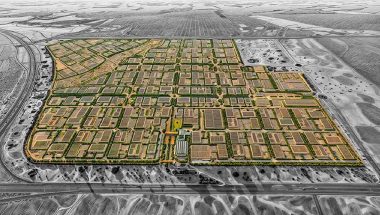- | 9:00 am
Can journalism in the Middle East stay credible and relevant in the age of AI?
Public perception and trust take a hit as AI is integrated into content creation and news reporting.

As artificial intelligence (AI) continues to expand across industries, its growing role in journalism has sparked considerable debate.
According to a recent report, the share of people who have used a standalone generative AI system such as ChatGPT has surged from 40% to 61% in the past year. Information-seeking has emerged as the primary reason for using AI, with weekly usage more than doubling to 24% and overtaking media creation.
However, AI-driven news consumption remains limited at just 6%, reflecting public hesitation toward AI-generated journalism.
Only 12% of respondents said they are comfortable with fully AI-produced news, compared with 62% who prefer entirely human-made content.
Concerns over transparency and reliability remain central to this skepticism. Just one in three respondents believes journalists routinely verify AI outputs before publication.
While awareness of AI’s role in newsrooms is increasing, 60% of people say they have yet to encounter visible, audience-facing AI features, and only 19% report seeing AI labelling on content, despite 77% consuming news daily. This suggests a widening gap between the growing use of AI in journalism and public recognition of its presence.
THE JOURNALISTIC PROCESS
This hesitancy is reflected in the journalistic process, where the report shows that people remain most comfortable with back-end uses of AI in news, such as editing, spelling, grammar, or translation, but are less comfortable with completely rewriting content, creating realistic images, and artificial presenters/authors.
Dr. Fedaa Mohamed, Associate Professor of Journalism, Faculty of Mass Communication, Ahram Canadian University, Egypt, says that while “there is a huge impact of AI on news production and the journalistic process, the sector is still in a transitional phase where AI is a powerful assistant, not a replacement for core journalistic judgment.”
“Some journalists generate news stories from structured data, while others use the AI for transcribing interviews or summarising lengthy documents that previously took too long.”
Artificial intelligence is transforming the entire information ecosystem in the Middle East, from how stories are produced to how audiences engage with them, according to Dr. Latifah Almuqren, AI Consultant and Assistant Professor at Princess Nourah bint Abdulrahman University (PNU).
“Newsrooms are increasingly using AI for real-time fact-checking, translation, and audience analytics, while generative tools accelerate content creation in Arabic,” says Dr. Almuqren.
She notes that the fundamental shift lies in personalization, as algorithms are now curating what readers see, shaping collective awareness.
“In the Arab world, where media trust is tied to credibility and cultural relevance, AI offers unprecedented opportunities for inclusivity, but also raises new challenges around bias and authenticity that must be managed through transparent governance.”
One of AI’s key contributions, Hadeer Gamil, TV Correspondent and Assistant Professor at the Kamal Adham Center for Broadcasting and Digital Journalism, AUC, says, is streamlining research and investigation, including transcribing voice notes into text and creating fully integrated visual content quickly and at lower costs, even simulating events when footage is unavailable.
Voice-over technology has also advanced, enabling high-quality narration in multiple languages. AI further supports proofreading, style improvement, the detection of manipulated images and videos, and the analysis of audience behavior, helping media organizations optimize their content and combat misinformation.
“Despite these advancements, AI remains a supportive tool, not a replacement for journalists,” says Gamil. “Human skills, professional judgment, and ethical standards remain central to journalism, and it is the responsibility of journalists to use these tools wisely and responsibly.”
PUBLIC PERCEPTION AND TRUST
There is a significant trust gap among the public toward AI. Gamil says on social media that numerous videos and discussions in which some people try to assert that certain entities control AI, “are biased, or produce responses influenced by specific agendas.”
“This has led the public, in general, to distrust AI, and they even question visual content, knowing that modern AI technologies can generate fake images and videos. Consequently, verifying news based solely on visual evidence has become more challenging than ever,” she adds.
However, the public is more likely to trust traditional media and journalists who use AI responsibly, because at least they know who is responsible for the content and the background of the journalist or media outlet, which reinforces trust in the delivered content.
“Using these tools allows for verifying the accuracy of content or determining whether it is misleading or false,” says Gamil.
At the same time, she stresses that traditional journalistic methods remain essential. Direct communication with sources, on-the-ground investigation, and established investigative tools are crucial for uncovering authentic information and upholding professional standards.
Raising public awareness about AI has also become a key responsibility for the media. “The audience needs to understand that not everything they see or hear is trustworthy, and that they must consult reliable sources before forming judgments, reacting, or believing certain news.”
Similarly, Dr. Almuqren emphasizes that safeguarding truth in the era of generative AI necessitates striking a balance between innovation and integrity.
“News organizations should implement human-in-the-loop verification, bias audits, and national standards for responsible AI. Ultimately, preserving truth is not a purely technical issue but a shared mission among journalists, technologists, and policymakers.”
Dr. Almuqren adds that collaboration is the strongest defense against AI-driven misinformation. “Universities can lead with research on Arabic language models and digital ethics; tech companies can provide infrastructure for detection and verification; and media organizations can apply these tools in practice.”
In Saudi Arabia and the wider region, emerging partnerships between AI innovation hubs and journalism programs are focusing on Arabic fact-checking datasets, AI literacy, and public awareness campaigns.
Additionally, ethical guidelines must be implemented, stating that a piece of content was made using AI to ensure transparency and consumer trust. Any AI-generated synthetic media (images, video, audio) that purports to be reality should be clearly labeled as such.
“Forbid the use of generative AI in certain parts of the journalistic writing, such as interviewing the sources and generating quotes or personal accounts from them, or even creating images of news events where authenticity is needed,” says Dr. Mohamed.
THE FUTURE OF REPORTING
Experts predict that over the next decade, AI will transform journalism in the Middle East into a more data-driven, inclusive, and human-centered approach. Automation will handle repetitive newsroom tasks, allowing journalists to focus on context and investigation. Real-time translation and voice synthesis will democratize access to Arabic content, particularly for people with disabilities.
“We’ll also see AI-assisted editorial intelligence predicting audience needs while maintaining ethical oversight. The defining feature of future journalism won’t be machines, but human judgment enhanced by AI guided by integrity, empathy, and cultural identity,” says Dr. Almuqren.
AI is set to transform journalism by both advancing the field and presenting new challenges. Dr. Mohamed says, “Economic pressures may intensify as automation displaces professional roles, threatening editorial diversity and local journalism. Sustaining credibility will require integrating AI ethically, preserving transparency, accountability, and truth as the core values of media practice.”
While AI will make advances in producing highly realistic visual and audio content, and may eventually create news programs, virtual anchors, and voice-over narrators that appear convincingly real, Gamil emphasizes that the role of human journalists will remain central.
“Journalists will increasingly focus on verifying information, analyzing AI-generated data, and adding the human and ethical dimension to the news. AI should be used as a supportive tool, not as a complete replacement, because true creativity, ethical judgment, investigative rigor, and professional standards—essential for ensuring the credibility of content—can only be upheld by real human journalists.”






































